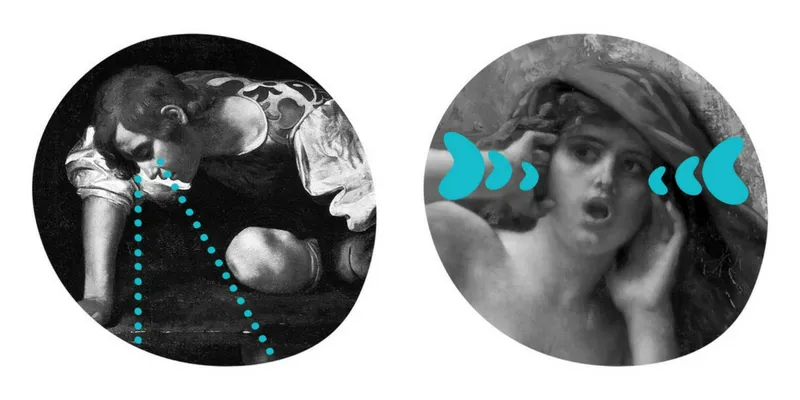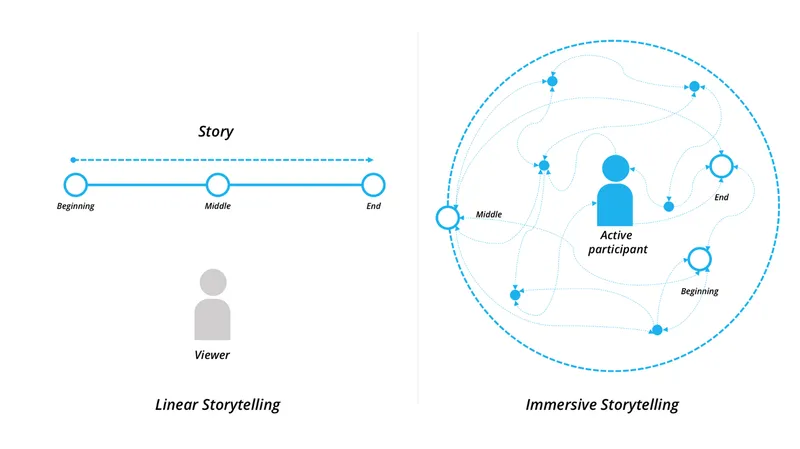Narcissus vs Echo: Beginning of the end for visual designers?
The primary objective of Visual Design has been to enhance User Experience by optimizing usability and aesthetics. On a surface level, this involves an understanding of colour theory and the Gestalt principles – similarity, unity, closure, proximity, scale, and so on. At a deeper level, visual designers delve into contextual enquiry and cultural interpretations to create mood-boards using photographs, colour swatches, typography, and icons – all of these to ensure that the final interface is embedded within the context and allows seamless navigation for the users.
However, research shows that Visual Design, as a competency in the digital world, is becoming increasingly insignificant. For designers who have transitioned from a graphic design or fine art background, the scope to create a ‘good looking and functional interface’ is diminishing rapidly. They are being asked to diversify their breadth of talent and acquire newer and more relevant skills. While this disruption appears to be a fresh one affecting the post-digital world, similarities can be drawn to the quirky, allegorical tale of Narcissus and Echo.
For the uninitiated, ‘Narcissus and Echo’ is an ancient Greek tale that is immortalized in Ovid’s Metamorphoses. Echo, a former talkative nymph, is cursed by Juno who reduces her only to repeat the last words spoken by others. She lends her name to the definition of the aural effect and perhaps also to the naming of Amazon’s smart speaker-cum-voice assistant.
In the story, a series of tragi-comic events lead to Echo falling in love with the handsome Narcissus. Unfortunately, Narcissus rejects her love and falls in love with his own reflection (origin of the word Narcissism) and wastes away looking at it. Despite the rejection, Echo’s love for him grows stronger, and yearning for reciprocation, she too begins to disappear, leaving behind only her voice.

Throughout history, the allegorical significance of the story has resonated with inventions and innovations, especially in areas where sound and image co-existed. Echo follows Narcissus, thunder follows lightning, talkies followed silent cinema, and a film’s soundtrack follows the moving images.
Digital interfaces (ATMs, mobile app-screens, web check-in kiosks at the airport, smartwatches, etc.) have been overwhelmingly visual in nature, with sound relegated to ‘trill’, ‘chime’, ‘beep’, ‘ping’, and ‘buzz’. In each of these cases, Echo has been an afterthought, doing a thankless job of lending her voice and shying away from the limelight. Each time, it breaks her heart when she overhears them say, “Don’t believe what you ‘hear’. Wait until you ‘see’ it.”
In this era of digital revolution, Echo is the Voice and Narcissus, the Visual. In an unprecedented struggle for recognition and reciprocation, Voice is leaving no stone unturned to create disruption in domains that were traditionally ruled by Visual. Amidst this drama of unrequited love, the practice of Visual Interface Design is facing disruption by Voice. Along with Voice, the other nemesis for Visual is Automation.
Disruption through automation
Early in my career, one of my projects was to create online payment gateway screens for a large banking and financial services company. Our design teams and that of the client used only Photoshop – a much older and less sophisticated version than CC. Pixel-perfection was achieved manually as we measured the expanse of drop-shadows, gaps between input channels, text heights, and so on using the marquee tool. Thereafter, we would reimagine the grid on a power-point presentation and pass it on to the developers. We had veterans in the team who were known for spotting marginal pixel misalignments just by looking at the screens. Such a skill of creating flawless, pixel-perfect screens was celebrated and respected. Not anymore.
As the technology around automation becomes increasingly robust, more and more companies are creating and depending on a library of scalable assets. Applying Machine Learning to standardize graphic design possibilities, these assets can be programmatically put together to create unique screens or duplicate existing ones. Such accurate reshuffling of visual assets is taking away from visual designers the pain, and joy, of manually-achieved pixel-perfect design.
Disruption through voice
Which areas is voice disrupting, you might ask? Everything that constitutes the mundane – low-impact regularities like making quick choices are being replaced by voice. From booking train tickets to ordering groceries, creating playlists to narrating recipes, to navigating smart aisles within a supermarket, Voice Interface (VI) is eliminating long lists of options that the user had to visually scroll through before making a final choice. Big Data and intricate study of user’s behavioural patterns are ensuring that customers are satisfied by the cherry-picking that VI does on their behalf, in the back-end.
This disruption is impacting design teams in the workplace too. Gone are the days when a GUI designer will collect wireframes from the UI counterpart and work individually, beautifying screens as per the latest graphic design trends. Qualified GUI designers are increasingly losing their seats at the table where user experience is being discussed. That is an alarming situation. To counter this and stay relevant, former GUI designers need to speak a new language – that of immersive storytelling and visceral products. This will require having a holistic overview of business, design, culture, and technology.
From mundane to the magnificent
Thankfully, visual interfaces are conquering newer territories that they will continue to dominate for years to come. This is the arena of the magnificent – Virtual Reality (VR) and Augmented Reality (AR). Facebook, Google, Apple, and Microsoft are investing in innovation labs to create seamless AR app experiences, and some are looking at immersive storytelling through VR. Complete with super-accurate facial recognition, eye-tracking mechanisms, and ambient gestures, the user is no longer a passive viewer but an active participant in the digital environment.
Karen Palmer’s Riot and similar such rapidly evolving prototypes are pushing the boundaries even further. These emotionally responsive VR films strengthened by A.I. technology compel the user to navigate through moments of conflict, and based on their decision-making, the narrative shapes up on-the-go. French avant-garde filmmaker Jean-Luc Godard once mentioned that films should have a beginning, middle, and end, but not necessarily in that order. VR films, with their immersive storytelling techniques, are capitalizing on the essence of this statement and taking it to the next level, allowing multiple entry points into the narrative.

Imagine a virtual scenario, where you are in a war-ravaged country. You could choose to be a fleeing refuge, a rebel, or a paramilitary officer employed to hunt down the enemies of the State. Based on who you choose to be and how you react to the situation at hand (neurological responses and AI), you can influence the fate of your own characters and that of others around you. You could either plan an escape route, fight the perpetrators, or blow up hideouts of the rebels. Just imagine the level of engagement and empathy that a virtual environment such as this can create. This is the next big leap in the history of storytelling, and visual storytellers have a significant role to play.
The same immersive techniques are being applied to retail, travel, and financial services:
- Try out a virtual dress and take a selfie, and share it instantly with friends to get their feedback.
- Put on the VR glasses from the comfort of your home and go through the bylanes of your upcoming destination, explore cafes, and bookmark them.
- Wealth management is now made easy with smart assistant avatars who help you navigate through a bunch of investment options using informative animations.
This is the world where Visual will continue to have an edge, where visual designers can contribute to create entire ecosystems and conjure formidable landscapes. However, in the process, they will need to drop their titles as visual designers and take up more challenging, multi-disciplinary roles such as visual architects and choreographers.
The tragedy of Narcissus was narcissism – he remained hooked to his own reflection for far too long. Visual designers need to look beyond the captivating screens that they create and be aware of Echo – voice technology and automation lurking around, disrupting businesses and redefining user experience.
Anirban Ghosh is a Design Specialist at ThoughtWorks India.
(Disclaimer: The views and opinions expressed in this article are those of the author and do not necessarily reflect the views of YourStory.)







